History
 The London Zoo housed a male golden eagle in the 1960s that they named Goldie. As we know, eagles love to fly high and be free. I don’t think they take well to being fenced in, at least Goldie certainly didn’t take well to it. On February 28, 1965, Goldie decided to take back his freedom. Goldie’s escape caused a nationwide sensation for the 12 days of his freedom. Then they caught him again. I feel sad for Goldie after he was caught, because being free was all he really wanted.
The London Zoo housed a male golden eagle in the 1960s that they named Goldie. As we know, eagles love to fly high and be free. I don’t think they take well to being fenced in, at least Goldie certainly didn’t take well to it. On February 28, 1965, Goldie decided to take back his freedom. Goldie’s escape caused a nationwide sensation for the 12 days of his freedom. Then they caught him again. I feel sad for Goldie after he was caught, because being free was all he really wanted.
Goldie first flew away from his keepers, while his cage was being cleaned. He saw his chance and he took it. Enjoying his newfound freedom, Goldie avoided being recaptured for nearly two weeks, despite a massive effort using equipment borrowed from the Royal Navy and Civil Defense Corps. He didn’t seem to have a desire to stray too far, and spent most of the time in Regent’s Park, which is the area surrounding the zoo. He also made a few 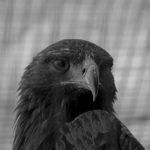 excursions into the nearby neighborhoods of Camden Town, Tottenham Court Road, and Euston. Those excursions brought him into the British public eye, and people were excited about this bit of celebrity. The zoo began receiving phone calls and letters in the thousands. Regent’s Park was the site of large crowds gathered to watch the bird’s keepers trying to catch Goldie. Drivers circled the park to watch Goldie in flight, causing severe traffic jams in the area. Of course, the media had a field day with the whole thing. There is nothing more interesting that watching the spectacle of a bunch of trainers trying to chase down an eagle…like they would have an easy success there. In fact the opposite was true, because Goldie spent two weeks roaming free before they finally caught him. Goldie was pretty resourceful too, because he managed to kill a duck in the garden of Winfield House, official residence of the United States Ambassador to the United Kingdom, within Regent’s Park. Goldie also attacked two terriers in the park, but was driven off by their owner. Of course, nobody likes to think about that part, but it is normal for a predatory bird. In fact, it was food that finally
excursions into the nearby neighborhoods of Camden Town, Tottenham Court Road, and Euston. Those excursions brought him into the British public eye, and people were excited about this bit of celebrity. The zoo began receiving phone calls and letters in the thousands. Regent’s Park was the site of large crowds gathered to watch the bird’s keepers trying to catch Goldie. Drivers circled the park to watch Goldie in flight, causing severe traffic jams in the area. Of course, the media had a field day with the whole thing. There is nothing more interesting that watching the spectacle of a bunch of trainers trying to chase down an eagle…like they would have an easy success there. In fact the opposite was true, because Goldie spent two weeks roaming free before they finally caught him. Goldie was pretty resourceful too, because he managed to kill a duck in the garden of Winfield House, official residence of the United States Ambassador to the United Kingdom, within Regent’s Park. Goldie also attacked two terriers in the park, but was driven off by their owner. Of course, nobody likes to think about that part, but it is normal for a predatory bird. In fact, it was food that finally 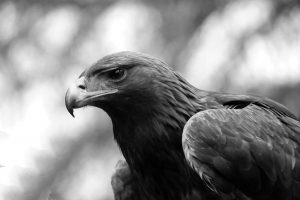 caught Goldie. He was finally caught on 11 March after the zoo’s deputy head keeper tempted him to earth with a dead rabbit. He was in good health after his experience and was reunited with his mate, Regina, which may have been the reason Goldie stayed in the area. The zoo’s attendance nearly doubled in the days after his return. That wasn’t the end of Goldie’s story however. Goldie escaped once again on December 15, 1965, and was recaptured December 19, 1965. I think that while Goldie loved his mate, Regina, he didn’t want to be fenced in. Golden eagles are monogamous, staying with their mate for years or even life. On March 8, 1985, Goldie was sent to the Falconry Centre in Newent, and died there about March 23, 1986.
caught Goldie. He was finally caught on 11 March after the zoo’s deputy head keeper tempted him to earth with a dead rabbit. He was in good health after his experience and was reunited with his mate, Regina, which may have been the reason Goldie stayed in the area. The zoo’s attendance nearly doubled in the days after his return. That wasn’t the end of Goldie’s story however. Goldie escaped once again on December 15, 1965, and was recaptured December 19, 1965. I think that while Goldie loved his mate, Regina, he didn’t want to be fenced in. Golden eagles are monogamous, staying with their mate for years or even life. On March 8, 1985, Goldie was sent to the Falconry Centre in Newent, and died there about March 23, 1986.
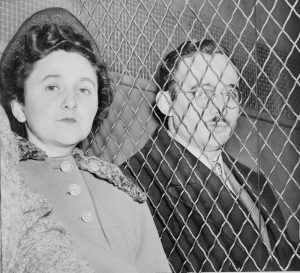
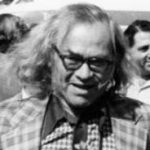 I could never begin to understand how an American citizen could be so evil as to commit espionage against the United States by selling secrets to other countries, but then again, that is not something that is so unusual these days. In the 1940’s, however, it wasn’t so common. Nevertheless, Julius Rosenberg and Ethel Rosenberg were American citizens who were convicted of spying on behalf of the Soviet Union. The Rosenbergs were accused of providing top-secret information about radar, sonar, jet propulsion engines, and valuable nuclear weapon designs to the Soviet Union at a time when the United States was the only country in the world with nuclear weapons. Imagine if we could go back to that time. The Rosenbergs were convicted of espionage in 1951, and they were executed by the federal government of the United States in 1953 in the Sing Sing correctional facility in Ossining, New York. They were the first American civilians to be executed for such charges and the first to suffer that penalty during peacetime.
I could never begin to understand how an American citizen could be so evil as to commit espionage against the United States by selling secrets to other countries, but then again, that is not something that is so unusual these days. In the 1940’s, however, it wasn’t so common. Nevertheless, Julius Rosenberg and Ethel Rosenberg were American citizens who were convicted of spying on behalf of the Soviet Union. The Rosenbergs were accused of providing top-secret information about radar, sonar, jet propulsion engines, and valuable nuclear weapon designs to the Soviet Union at a time when the United States was the only country in the world with nuclear weapons. Imagine if we could go back to that time. The Rosenbergs were convicted of espionage in 1951, and they were executed by the federal government of the United States in 1953 in the Sing Sing correctional facility in Ossining, New York. They were the first American civilians to be executed for such charges and the first to suffer that penalty during peacetime.
On March 6, 1951, the trial of Ethel and Julius Rosenberg began in New York Southern District federal court. Presiding over the espionage trial was Judge Irving R Kaufman. The couple was charged with espionage, rather than treason, because the latter could not be charged since the United States was not at war with the Soviet Union at the time of the crime’s commission. The father and son team of Emanuel and Alexander Bloch defended the Rosenbergs and their co-defendant, Morton Sobell. Roy Cohn, best known for his association with Senator Joseph McCarthy prosecuted the trio.
The Rosenbergs and Sobell, along with other co-conspirators were directly responsible for the beginning of the Cold War. Julius Rosenberg’s brother-in-law, David Greenglass was a machinist at Los Alamos, where America developed the atomic bomb. Rosenberg was a member of the American Communist Party and was fired from his government job during the Red Scare. According to Greenglass, Rosenberg asked him to pass highly confidential instructions on making atomic weapons to the Soviet Union. In compliance, Greenglass gave the information to Harry Gold, who gave it to the Russians. The Soviets exploded their first atomic bomb in September 1949, effectively starting the Cold War, based on information, including that from Greenglass, they had obtained from spies.
The confession of Greenglass was the only direct evidence of the Rosenberg’s involvement. The left-wing  community believed that the Rosenbergs were prosecuted because of their membership in the Communist Party. The Rosenbergs became the cause of leftists throughout the nation. The rest of their family, including their two sons declared the innocence of the Rosenbergs for years. The trial lasted nearly a month…ending on April 4, 1951. Sobell received a thirty year sentence. Greenglass got fifteen years for his cooperation. Reportedly, the Rosenbergs were offered a deal in which their death sentences would be commuted in return for an admission of their guilt. They refused and were executed. In 2008, the only surviving defendant, Morton Sobell, admitted that he was a Soviet spy and implicated Julius Rosenberg in industrial and military espionage.
community believed that the Rosenbergs were prosecuted because of their membership in the Communist Party. The Rosenbergs became the cause of leftists throughout the nation. The rest of their family, including their two sons declared the innocence of the Rosenbergs for years. The trial lasted nearly a month…ending on April 4, 1951. Sobell received a thirty year sentence. Greenglass got fifteen years for his cooperation. Reportedly, the Rosenbergs were offered a deal in which their death sentences would be commuted in return for an admission of their guilt. They refused and were executed. In 2008, the only surviving defendant, Morton Sobell, admitted that he was a Soviet spy and implicated Julius Rosenberg in industrial and military espionage.
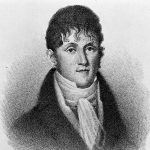
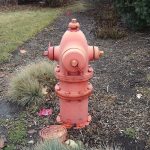 Anyone who has been around very long knows what a fire hydrant is. Before the fire hydrant, water ad to be transported to a fire. If there was a water source nearby, they would often use a bucket brigade, but if not they had to try to bring it in by wagon. Bucket brigades weren’t very efficient, but they were all they had at the time. Firefighters stood in a line between the fire and the source of water and passed buckets along, one by one until the fire was extinguished. All too often, even in the cities, the structure burned to the ground because the source of water was simply too far away to save it. Finally, when city water became a thing, someone came up with the idea of a fire hydrant. This invention has worked so well, that it has saved untold numbers of lives and structures. These days there is a fire hydrant on just about every block. In fact, they are so common that we really don’t notice them at all.
Anyone who has been around very long knows what a fire hydrant is. Before the fire hydrant, water ad to be transported to a fire. If there was a water source nearby, they would often use a bucket brigade, but if not they had to try to bring it in by wagon. Bucket brigades weren’t very efficient, but they were all they had at the time. Firefighters stood in a line between the fire and the source of water and passed buckets along, one by one until the fire was extinguished. All too often, even in the cities, the structure burned to the ground because the source of water was simply too far away to save it. Finally, when city water became a thing, someone came up with the idea of a fire hydrant. This invention has worked so well, that it has saved untold numbers of lives and structures. These days there is a fire hydrant on just about every block. In fact, they are so common that we really don’t notice them at all.
Credit for the invention of the fire hydrant often goes to Frederick Graff Sr, who invented the first pillar fire hydrant in 1801, however fire hydrants were in place before that. The main reason that the credit has gone to Graff is that the name of the real inventor has been lost. We know that it was invented in Philadelphia, Pennsylvania in the early 1800s. That said, it must have been right before Graff’s version, which is said to have been invented in 1801. The patent with the name of the true inventor was destroyed, but just how that happened is unknown. There are stories of fire, floods, and even an argument that caused the destruction of them. Whatever happened, we will never really know the truth on this. However, we do know for a fact that Graff created the first pillar fire hydrant in 1801, which is the reason why he receives credit for it today.
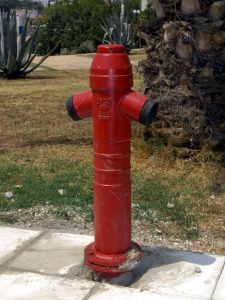

We owe a debt of gratitude to the inventor of the fire hydrant, whoever he may be, but we have no idea who to credit for it. I find it very strange that even the story of how the patent was lost is a mystery. It almost seems like it has been hidden for a specific purpose. It makes me wonder if the two men fought over who was the real inventor. Maybe they even worked on it together. Since both are now gone, we can’t even ask. The whole matter feels unreal, but we are left with the mystery anyway. Over the years styles and designs of hydrants have varied by country, state, and city, but the basic design is still the same. It pulls water from the underground source and connects it to the firefighters hose so water can be sprayed on the fire to put out the fire.
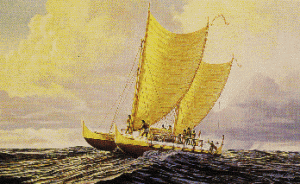
 As the world first began to be settled, the Hawaiian Islands were discovered, and in approximately 400AD Polynesians from the Marquesas Islands traveled the 2000 miles distance to Hawaii’s Big Island in canoes. To get to Hawaii, they navigated by the sun and stars, reading the winds, currents, and seabirds’ flight. The Polynesians sailed across the open ocean in great double-hulled canoes. The Polynesians brought with them items essential to their survival, including pigs, dogs, and chickens; the roots of kalo (a root vegetable and one of the most complex carbohydrates on the planet) and sweet potato; the seeds and saplings of coconut, banana, sugar cane, and other edible and medicinal plants. Polynesians were well-established on the islands when Polynesians from the Society Islands arrived in Hawaii. These newcomers became the new rulers of Hawaii. After a time of voyaging back and forth between the Society Islands and the Hawaiian Archipelago, contact with southern Polynesia ceased. During the 400 years of isolation that followed, a unique Hawaiian culture developed. That is similar to what happened when the pilgrims came to the new world…present-day United States. Once away from the culture one comes from, new ideas and new skills begin to form.
As the world first began to be settled, the Hawaiian Islands were discovered, and in approximately 400AD Polynesians from the Marquesas Islands traveled the 2000 miles distance to Hawaii’s Big Island in canoes. To get to Hawaii, they navigated by the sun and stars, reading the winds, currents, and seabirds’ flight. The Polynesians sailed across the open ocean in great double-hulled canoes. The Polynesians brought with them items essential to their survival, including pigs, dogs, and chickens; the roots of kalo (a root vegetable and one of the most complex carbohydrates on the planet) and sweet potato; the seeds and saplings of coconut, banana, sugar cane, and other edible and medicinal plants. Polynesians were well-established on the islands when Polynesians from the Society Islands arrived in Hawaii. These newcomers became the new rulers of Hawaii. After a time of voyaging back and forth between the Society Islands and the Hawaiian Archipelago, contact with southern Polynesia ceased. During the 400 years of isolation that followed, a unique Hawaiian culture developed. That is similar to what happened when the pilgrims came to the new world…present-day United States. Once away from the culture one comes from, new ideas and new skills begin to form.
The Hawaiian people were highly skilled farmers and fishermen, who lived in small communities ruled by chieftains who battled one another for territory. The new Hawaiian culture was a highly stratified society with strictly maintained classes of people. The chiefs headed the social pyramid and ruled over the land. The highest class, the Kahuna (professionals) were highly regarded and sometimes feared, they were experts on religious ritual or specialists in canoe-building, herbal medicine, and healing. The middle class, the maka`ainana (commoners) farmed, fished, built walls, houses, and fishponds…and paid taxes to the paramount chiefs and his chiefs. Kauwa, the lowest class, were outcasts or slaves. I can’t say that the class society was fair, because it really wasn’t, but many societies of that era were ruled in that way, and in reality, this class society still exists…maybe with slight differences, but it still exists.
In many ways, the culture was quite oppressive, especially to women. A system of laws known as Kanawai enforced Hawaii’s social order. Certain people, places, things, and times were considered sacred. Being near them was kapu, or forbidden except to a very privileged few. Women ate apart from men and were restricted from eating pork, coconuts, bananas, or a variety of other foods. Kapu regulated fishing, planting, and the harvesting of other resources, thus ensuring their conservation. Any breaking of kapu disturbed the stability of society, and the punishment for breaking this law was usually death.
Still, even with the strict laws, village life was rich and interesting. Hawaiians fished in coastal waters and collected shellfish, seaweed, and salt along the shore. They raised pigs, dogs, and chickens and harvested sweet potatoes, kalo, and other crops. Men pounded kalo into poi, which is the staple food of Hawaiians, while women beat the inner bark of wauke (paper mulberry) into kapa (bark cloth). The sounds of taro pounding and 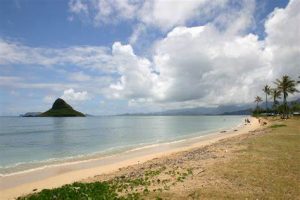
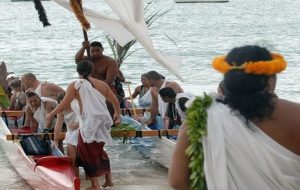 kapa beating were rhythmical signatures of Hawaiian village life. That changed dramatically after Captain James Cook arrived in 1778 and introduced the rest of the world to Hawaii. Cook, who named the islands after the Earl of Sandwich, returned a year later and was killed in a confrontation with Hawaiians at Kealakekua Bay, on Hawaii’s Big Island. Still his impact on the state of Hawaii remains.
kapa beating were rhythmical signatures of Hawaiian village life. That changed dramatically after Captain James Cook arrived in 1778 and introduced the rest of the world to Hawaii. Cook, who named the islands after the Earl of Sandwich, returned a year later and was killed in a confrontation with Hawaiians at Kealakekua Bay, on Hawaii’s Big Island. Still his impact on the state of Hawaii remains.
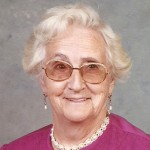
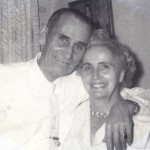 My grandma, Hattie Byer was the only grandmother I had while growing up, because my dad’s parents passed before and shortly after I was born. Grandma was a multi-faceted person, probably by necessity. She and my grandpa, George Byer had nine children…seven girls and two boys. As a stay-at-home mom, grandma was the main disciplinarian in the family. Grandpa worked long hours, and while he could discipline the kids, he truly had a soft heart, and I think it pained him when he had to impose discipline on his kids. I think that happens a lot. In my family, I was the disciplinarian too. My mom, Collene Spencer has told me of some of the times she got on the wrong side of her mother, with negative consequences. Lets just say that when your brother is getting in trouble, you best stay out of it, because sassing your mom is never a good idea.
My grandma, Hattie Byer was the only grandmother I had while growing up, because my dad’s parents passed before and shortly after I was born. Grandma was a multi-faceted person, probably by necessity. She and my grandpa, George Byer had nine children…seven girls and two boys. As a stay-at-home mom, grandma was the main disciplinarian in the family. Grandpa worked long hours, and while he could discipline the kids, he truly had a soft heart, and I think it pained him when he had to impose discipline on his kids. I think that happens a lot. In my family, I was the disciplinarian too. My mom, Collene Spencer has told me of some of the times she got on the wrong side of her mother, with negative consequences. Lets just say that when your brother is getting in trouble, you best stay out of it, because sassing your mom is never a good idea.
Grandma was also the family chef. She made the best of so many dishes. Her Potato Pancakes have never been beaten, and yes, I’m biased, but so is every other person who has ever had them. Her Potato Milk Soup was heavenly, and her Oyster Stew was loved by many. Of course, it was my grandmother’s good cooking that created all the good cooks in the family. She taught her girls, and her boys too, to cook and they were and are still very good cooks. They don’t make exotic dishes, they make good old fashioned “Comfort Food,” and nobody makes it better than they do. Grandma could make a great mean out of almost nothing, and during the Great Depression, that is just what she did, as many a hungry guest can attest. Grandma always had extras at the table in those years. People instinctively knew where they could go to be welcomed to dine at a moment’s notice. None were turned away, and all ate to their fill.
and yes, I’m biased, but so is every other person who has ever had them. Her Potato Milk Soup was heavenly, and her Oyster Stew was loved by many. Of course, it was my grandmother’s good cooking that created all the good cooks in the family. She taught her girls, and her boys too, to cook and they were and are still very good cooks. They don’t make exotic dishes, they make good old fashioned “Comfort Food,” and nobody makes it better than they do. Grandma could make a great mean out of almost nothing, and during the Great Depression, that is just what she did, as many a hungry guest can attest. Grandma always had extras at the table in those years. People instinctively knew where they could go to be welcomed to dine at a moment’s notice. None were turned away, and all ate to their fill.
My grandmother was a woman of small stature, just 5′ in her tall days. I’m not sure where her height came from, because her sisters were certainly much taller than the was. Since I have no idea how tall her mother, or grandmothers were, I guess it might be quite normal for her to be short. Still I have often wondered how she 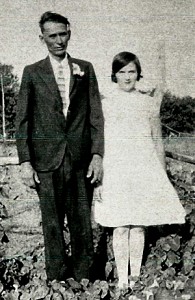
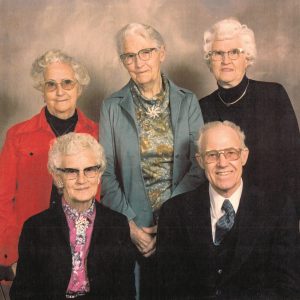 ended up so short. By the time I really gave much thought to her height, she had shrunk some, and probably stood 4’10” tall…or short, as it were. She didn’t need to be real tall to catch Grandpa’s eye, however. He was in love almost immediately. Grandpa stood over 6′ tall, so there was quite a contrast there, but they always made a sweet couple, and Grandpa was always proud of his beautiful wife. Grandma was a multi-faceted person, who could handle many things, and we have all always been very proud of her too. Today would have been Grandma Byer’s 112th birthday. Happy birthday in Heaven Grandma. I know you and Grandpa are having a wonderful celebration. We love and miss you very much.
ended up so short. By the time I really gave much thought to her height, she had shrunk some, and probably stood 4’10” tall…or short, as it were. She didn’t need to be real tall to catch Grandpa’s eye, however. He was in love almost immediately. Grandpa stood over 6′ tall, so there was quite a contrast there, but they always made a sweet couple, and Grandpa was always proud of his beautiful wife. Grandma was a multi-faceted person, who could handle many things, and we have all always been very proud of her too. Today would have been Grandma Byer’s 112th birthday. Happy birthday in Heaven Grandma. I know you and Grandpa are having a wonderful celebration. We love and miss you very much.
 Any kind of explosive can lead to danger. There are some industries that use explosives in their daily activities, and for the most part, all is well and people are safe. Nevertheless, there are those few situations, which always seem like they are so common, when they make the news. In reality, they are probably very rare, although I can’t say that for sure. It just seems to me that if these explosions were common, we would find a different way of doing things.
Any kind of explosive can lead to danger. There are some industries that use explosives in their daily activities, and for the most part, all is well and people are safe. Nevertheless, there are those few situations, which always seem like they are so common, when they make the news. In reality, they are probably very rare, although I can’t say that for sure. It just seems to me that if these explosions were common, we would find a different way of doing things.
On the night of February 24, 1922, in McCook, Illinois, a powder magazine exploded in a stone quarry. The quarry at McCook was on the outskirts of Chicago. The the explosion occurred, it shook the entire city. I know that explosions can be felt for miles and miles, and can even show up on seismometers. Still, Chicago is a big city. It seems odd to think that such a big city could feel the effects of an explosion, but that was just the beginning. 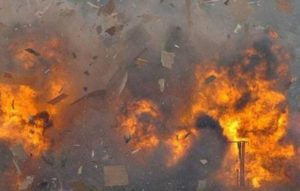 Windows were shattered in the south and the west portions of the city shortly before 9:30pm. People began calling the emergency numbers and calling newspapers to find out where the explosion had occurred and how many people had been killed. It seemed that no one knew at first, but soon it became obvious. An inquiry by The Associated Press to Indianapolis soon brought a bulletin from LaFayette, Indiana, that the explosion had occurred at McCook, Illinois.
Windows were shattered in the south and the west portions of the city shortly before 9:30pm. People began calling the emergency numbers and calling newspapers to find out where the explosion had occurred and how many people had been killed. It seemed that no one knew at first, but soon it became obvious. An inquiry by The Associated Press to Indianapolis soon brought a bulletin from LaFayette, Indiana, that the explosion had occurred at McCook, Illinois.
With that information they were able to find out within a few minutes that there had been an accident at the quarry which is situated in a rather secluded spot. It was found that no one had been killed, but early reports had no explanation as to how it occurred. The first definite report of the blast reached a Monon railroad signal tower at Dyer, Indiana. It was then relayed to the Monon dispatcher at LaFayette, before it came back to  Chicago over The Associated Press wire.
Chicago over The Associated Press wire.
The McCook quarry has had a long history problems that have been the direct result of quarry blasting. The quarries need to blast for loosen up the stone, but the effects can be devastating, even causing train derailments at times. The public has at times complained about the damages, but there didn’t seem to be much that could be done about it. Pictures of cracked walls and broken windows have been brought in for emphasis. I guess that until someone comes u with a better way to get the rock out of the quarry, the city will be stuck with the problem for the foreseeable future.
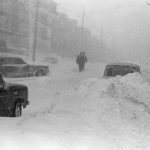
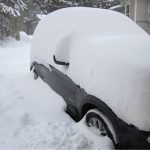 As the United States is in the grip of a fierce snow storm, I am reminded of another snow storm that happened February 21 – 23, 1971. The storm is considered Oklahoma’s extreme storm. This blizzard buried northwestern Oklahoma under as much as three feet of snow, and that doesn’t include the drifting. The town of Buffalo was the hardest hit. They reported 23 inches of snow on the 21st alone, and a state-record snow depth of 36 inches by the morning of the 24th. The northern part of the state was just buried.
As the United States is in the grip of a fierce snow storm, I am reminded of another snow storm that happened February 21 – 23, 1971. The storm is considered Oklahoma’s extreme storm. This blizzard buried northwestern Oklahoma under as much as three feet of snow, and that doesn’t include the drifting. The town of Buffalo was the hardest hit. They reported 23 inches of snow on the 21st alone, and a state-record snow depth of 36 inches by the morning of the 24th. The northern part of the state was just buried.
Oklahoma tends to be a mild weather state, with temperatures in December, January, and February averaging in the 50s. This week is the anniversary of the 1971 blizzard, which was likely the most intense winter storm ever to hit the Sooner State, although the current storm might rival it now. With the current storm, Oklahoma is seeing temperatures averaging -6°. The prior record was in 1909 at 7°. The power company had had to implement rolling blackouts to assure that the power grids don’t fail. I don’t think they have received the amount of snow with the current storm, but the severity is very similar, when you think about it. Anytime a storm is is bad enough to shut things down, especially the power, it is severe.
When the blizzard of 1971 finally ended, 36 inches of snow was measured in Buffalo, which was the state’s record for the highest snowfall total, but the snow drifts measured as high as 20 feet tall. While northwestern Oklahoma was hit very hard, just a short distance to the west in the Oklahoma Panhandle, only light snow fell with Boise City receiving only 3 inches and only 2 inches in Kenton. The 1971 storm put ranchers in a precarious position until C-124s from the Oklahoma Air National Guard dropped 150 tons of hay to stranded Oklahoma cattle. Local cattleman flew along with the aircraft to guide the aircrews to the stranded cattle. The massive loss numbers of 15,000 in livestock accounted for much of the $2 million in damages.
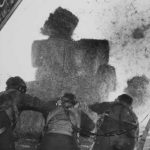
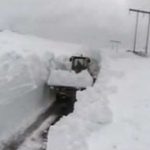 The vicious storm became known as the 84-hour blizzard. It actually occurred across the eastern half of the Texas and Oklahoma Panhandles. The storm his the worst un Oklahoma, but in the region, 8 deaths were reported…7 in Pampa, 1 in the Oklahoma Panhandle. The average drifts were 10 to 20 feet. Storms like these will not likely be soon forgotten, if they are ever forgotten. People are really never prepared for such cold temperatures and so much snow in the southern states. We can try to prepare, but when year after year goes by without such a sever storm, we soon become complacent, until the next one hits us, that is.
The vicious storm became known as the 84-hour blizzard. It actually occurred across the eastern half of the Texas and Oklahoma Panhandles. The storm his the worst un Oklahoma, but in the region, 8 deaths were reported…7 in Pampa, 1 in the Oklahoma Panhandle. The average drifts were 10 to 20 feet. Storms like these will not likely be soon forgotten, if they are ever forgotten. People are really never prepared for such cold temperatures and so much snow in the southern states. We can try to prepare, but when year after year goes by without such a sever storm, we soon become complacent, until the next one hits us, that is.
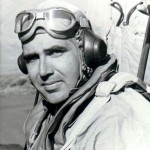
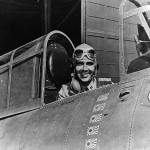 When a war begins, I doubt if anyone is thinking about the medals or the honors they might receive, because what they really want is for the war to be over already. Nobody enjoys going to war…not even the one who starts the war. There are never any guarantees that you will come out of a war alive, so most people would rather not go at all. Nevertheless, when a soldier goes into war, he or she has taken a vow to do their very best, and to fight to the death, if necessary. When World War II got started, the United States really intended to stay out of it. They vowed to stay neutral…until the Japanese attacked Pearl Harbor in Hawaii. Once the United States entered World War II, however, we were in it to win it.
When a war begins, I doubt if anyone is thinking about the medals or the honors they might receive, because what they really want is for the war to be over already. Nobody enjoys going to war…not even the one who starts the war. There are never any guarantees that you will come out of a war alive, so most people would rather not go at all. Nevertheless, when a soldier goes into war, he or she has taken a vow to do their very best, and to fight to the death, if necessary. When World War II got started, the United States really intended to stay out of it. They vowed to stay neutral…until the Japanese attacked Pearl Harbor in Hawaii. Once the United States entered World War II, however, we were in it to win it.
Lieutenant Edward O’Hare, an American naval aviator of the United States Navy, was born on March 13, 1914 in Saint Louis, Missouri, to Selma Anna (Lauth) and Edward Joseph O’Hare. He was of Irish and German descent. Edward, who was nicknamed “Butch,” had two sisters, Patricia and Marilyn. Their parents divorced in 1927. Butch and his sisters stayed with their mother in Saint Louis, and their father moved to Chicago. O’Hare joined the Navy, and from there, life moved pretty fast. On July 21, 1941, O’Hare met his future wife, Rita and asked her to marry him that night. He knew immediately that she was the one. They got married on September 6, 1941 and their daughter, Kathleen was born in January or February of 1943. O’Hare first met her when she was a month old, because of missions he was on.
In the Navy, O’Hare was stationed first on the USS Saratoga, then on the USS Enterprise, and then on the USS Lexington, flying a Grumman F4F-3 Wildcat. In mid-February 1942, the Lexington sailed into the Coral Sea. A town named Rabaul, at the very tip of New Britain, one of the islands that comprised the Bismarck Archipelago, had been invaded in January by the Japanese and transformed into a stronghold. In fact, it had been turned into one huge airbase. The occupation of Rabaul put the Japanese in prime striking position for the Solomon Islands, which would have been put them in a perfect position for expanding their ever-growing Pacific empire. Given the mission of destabilizing the Japanese position on Rabaul with a bombing raid, the fighters on the Lexington took off from the aircraft carrier’s deck in a raid against the Japanese position at Rabaul. Just moments later, Lieutenant O’Hare became America’s first World War II flying ace. In the battle that took place on February 20, 1942, O’Hare believed he had shot down six bombers and damaged a seventh. Captain Frederick C Sherman later reduced that number to five, as four of the reported nine bombers were still overhead when he pulled off. Nevertheless, in the opinion of Admiral Brown and of Captain Sherman, commanding the Lexington, Lieutenant O’Hare’s actions may have saved the carrier from serious damage or even loss. In a mere four minutes, O’Hare shot down five Japanese G4M1 Betty bombers, bringing a swift end to the Japanese attack and earning O’Hare the designation “Ace,” which was given to any pilot who had five or more downed enemy planes to his credit. The attack on the bombers was great, but it ruined the element of surprise, so the mission was called off.
On the night of November 26, 1943, the USS Enterprise introduced the experiment in the co-operative control of Avengers and Hellcats for night fighting. The team consisted of three planes, breaking up a large group of land-based bombers. O’Hare volunteered to lead this mission to conduct the first-ever Navy nighttime fighter 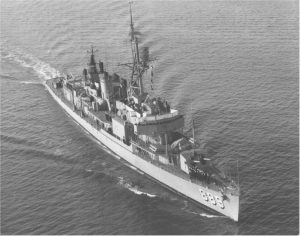
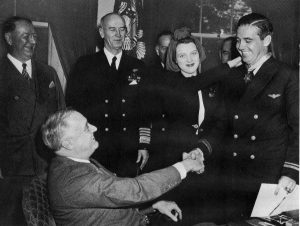 attack from an aircraft carrier to intercept a large force of enemy torpedo bombers. When the call came to man the fighters, Butch O’Hare was eating. He grabbed up part of his supper in his fist and started running for the ready room. It was to be his final mission. When it was over, O’Hare was missing in action. He was declared dead a year later. The airport in Chicago and a destroyer would later be named in his honor. He lived life fast and died young, but he was always in it to win it.
attack from an aircraft carrier to intercept a large force of enemy torpedo bombers. When the call came to man the fighters, Butch O’Hare was eating. He grabbed up part of his supper in his fist and started running for the ready room. It was to be his final mission. When it was over, O’Hare was missing in action. He was declared dead a year later. The airport in Chicago and a destroyer would later be named in his honor. He lived life fast and died young, but he was always in it to win it.
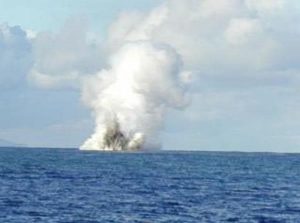 I realize that many people, me included, would have no desire to explore the inside of a volcano, but for scientists of volcanos…volcanologists, it is somehow important. A dormant volcano would be fairly easy to explore. There is less chance of getting caught in an eruption, but for one that isn’t dormant, it isn’t so easy. I don’t think I would want to try to explore Kilauea, because…well, it goes up all the time. Another very active volcano, Kavachi is not only active, but it is underwater. Kavachi is located in the south-west Pacific Ocean, south of Vangunu Island in the Solomon Islands. and is referred to locally as Rejo te Kavachi, meaning “Kavachi’s oven.” Kavachi has become active and then eroded back into the sea at least eight times since its first recorded eruption in 1939.
I realize that many people, me included, would have no desire to explore the inside of a volcano, but for scientists of volcanos…volcanologists, it is somehow important. A dormant volcano would be fairly easy to explore. There is less chance of getting caught in an eruption, but for one that isn’t dormant, it isn’t so easy. I don’t think I would want to try to explore Kilauea, because…well, it goes up all the time. Another very active volcano, Kavachi is not only active, but it is underwater. Kavachi is located in the south-west Pacific Ocean, south of Vangunu Island in the Solomon Islands. and is referred to locally as Rejo te Kavachi, meaning “Kavachi’s oven.” Kavachi has become active and then eroded back into the sea at least eight times since its first recorded eruption in 1939.
It is very strange to me to see pictures and videos of volcano erupting in the middle of the ocean. It seems so unnatural that fire and water could mix and the water not put out the fire. It’s a strange concept, but one that has baffled me for years. I think that the thought of fire and water has maybe been the curiosity behind the exploration of these underwater volcanoes. In May 2000, an international research team aboard the CSIRO  research vessel Franklin fixed the Kavachi volcano at 8° 59.65’S, 157° 58.23’E. The vent of the volcano was below sea level, but frequent eruptions ejected molten lava up to 230 feet above sea level, and sulfurous steam plumes up to 1,600 feet. The team mapped a roughly conical feature rising from 3,600 feet water depth, with the volcano having a basal diameter of about 5.0 miles. Of course, underwater volcanoes were the foundation of the Hawaiian Islands, so it is not a odd idea that when the Kavachi volcano erupted in 2003, a 49-foot island formed above the surface. The small island disappeared a short time later, so I suppose the volcano would have to erupt almost constantly in order to form an island that would last.
research vessel Franklin fixed the Kavachi volcano at 8° 59.65’S, 157° 58.23’E. The vent of the volcano was below sea level, but frequent eruptions ejected molten lava up to 230 feet above sea level, and sulfurous steam plumes up to 1,600 feet. The team mapped a roughly conical feature rising from 3,600 feet water depth, with the volcano having a basal diameter of about 5.0 miles. Of course, underwater volcanoes were the foundation of the Hawaiian Islands, so it is not a odd idea that when the Kavachi volcano erupted in 2003, a 49-foot island formed above the surface. The small island disappeared a short time later, so I suppose the volcano would have to erupt almost constantly in order to form an island that would last.
Of course, that strangest thing about Kavachi is that while the volcano is quite active, it has another strange anomaly to it. In 2015, marine life has been found living inside the Kavachi crater, including two species of sharks and a sixgill stingray. It seems so strange that they could live in an environment that must be quite acidic. The scientists haven’t been able to go in and explore yet, because of the possibility of an eruption.  Finally they took a chance and dropped a camera into the volcano. Concerned about activity from the volcano, the expedition members only left the camera in the hot, acidic water around the volcano for about an hour. Still, it was all they needed to find the wildlife inside. Of course, during an eruption, there is no way this marine life could live inside the volcano. That makes me wonder if they somehow know the eruption is coming so they can get out, or do they simply die when an eruption occurs. That somehow doesn’t seem like the case, because eventually there would be no more marine life in the volcano. I guess that is just a question we will probably never have an answer to.
Finally they took a chance and dropped a camera into the volcano. Concerned about activity from the volcano, the expedition members only left the camera in the hot, acidic water around the volcano for about an hour. Still, it was all they needed to find the wildlife inside. Of course, during an eruption, there is no way this marine life could live inside the volcano. That makes me wonder if they somehow know the eruption is coming so they can get out, or do they simply die when an eruption occurs. That somehow doesn’t seem like the case, because eventually there would be no more marine life in the volcano. I guess that is just a question we will probably never have an answer to.

 When we think of the weapons of warfare, we think of guns, planes, tanks, and such, but there are weapons of warfare that while seemingly far less lethal, are still deadly…in other ways. Economic warfare is something I would never have considered, even though it makes perfect sense. The Germans in World War II thought of every possible weapon, or very close to it. If a nation has no money to bankroll a war, they are very likely going to lose. That was the position that Germany wanted to put Great Britain in during World War II. They decided on an age-old plan…if you’re a criminal that is. Counterfeiting money to tank the economy.
When we think of the weapons of warfare, we think of guns, planes, tanks, and such, but there are weapons of warfare that while seemingly far less lethal, are still deadly…in other ways. Economic warfare is something I would never have considered, even though it makes perfect sense. The Germans in World War II thought of every possible weapon, or very close to it. If a nation has no money to bankroll a war, they are very likely going to lose. That was the position that Germany wanted to put Great Britain in during World War II. They decided on an age-old plan…if you’re a criminal that is. Counterfeiting money to tank the economy.
The year was 1942 and for the purpose of artificially causing inflation of the British pound, leading to the economic collapse of the competition, while simultaneously funding some of their own projects, the production of the British “White Notes” was about to start. It would not start in Britain, however. These “White Notes” would be made behind the gates of Sachsenhausen concentration camp. The Germans decided to begin counterfeiting British banknotes. These tactics were considered particularly wrong by the German soldiers themselves, basically sneaky and unprofessional. However, soon after World War II, it became common practice for different countries to counterfeit the currency of their opposition in times of war. Evil knows no bounds.
The first attempt at counterfeiting, known as Operation Andrew, failed because of disagreements between top brass inside of the Nazi Party. Friederich Walter Bernhard Krueger was placed in charge of Germany’s second attempt at counterfeiting British notes. The second operation’s codename was Bernhard because that is what Krueger was called. In preparation for the production, Bernhard assembled a team of about 140 men/prisoners. Some historians have suggested that it was as many as 300. These men were told they would receive better treatment and special perks like radio, newspapers, warm barracks, if they participated in the operation. The men had nothing to lose. All they had to do was counterfeit 400,000 British banknotes a month.
After a year of hard work, and the prisoners finally successfully counterfeited the British White Note. By 1945, conservative estimates figure 70,000,000 notes were printed by the inmates. It was a cache worth upwards of £100,000,000. In order to complete this herculean task, the team of counterfeiters studied vast quantities of authentic White Notes. They broke this massive task up into seven smaller tasks, each one seemingly more difficult than the last. “These tasks included: Discovering secret security marks, Engraving the vignette, Perfecting the paper, Creating identical ink, Solving the serial numbering system, Re-creating the signatures, dates and places of origin, and Printing the notes. The men found no fewer than 150 different security marks hidden on the White Notes. There were intentional minor defects and flaws that the Bank of England incorporated as anti-counterfeiting devices. To make things even harder, these security devices were different for each denomination. Nonetheless, in short order, the counterfeit team produced a plate for each denomination: £5, £10 £20 and £50.” The plan was coming together and soon they were ready to execute it.
The plan was to fly over and drop the counterfeit money from the planes. Once it was laundered and in the hands of the people, they could spend it and because there was no real backing for the money, the economy would tank. The operation went on for a time, but with the late February and early March 1945 advance of the Allied armies, all production of notes at Sachsenhausen ceased. The equipment and supplies were packed and transported, with the prisoners, to the Mauthausen-Gusen concentration camp in Austria, arriving on 12 March. 
 They had to hide the evidence. They didn’t give up on the process, however. Shortly afterwards Krüger arranged a transfer of the equipment to the Redl-Zipf series of tunnels so production could be restarted. The order to resume production was soon rescinded, however, and the prisoners were ordered to destroy the cases of money they had with them. The equipment and any money not burned was loaded onto trucks and sunk in the Toplitz and Grundlsee lakes.
They had to hide the evidence. They didn’t give up on the process, however. Shortly afterwards Krüger arranged a transfer of the equipment to the Redl-Zipf series of tunnels so production could be restarted. The order to resume production was soon rescinded, however, and the prisoners were ordered to destroy the cases of money they had with them. The equipment and any money not burned was loaded onto trucks and sunk in the Toplitz and Grundlsee lakes.

